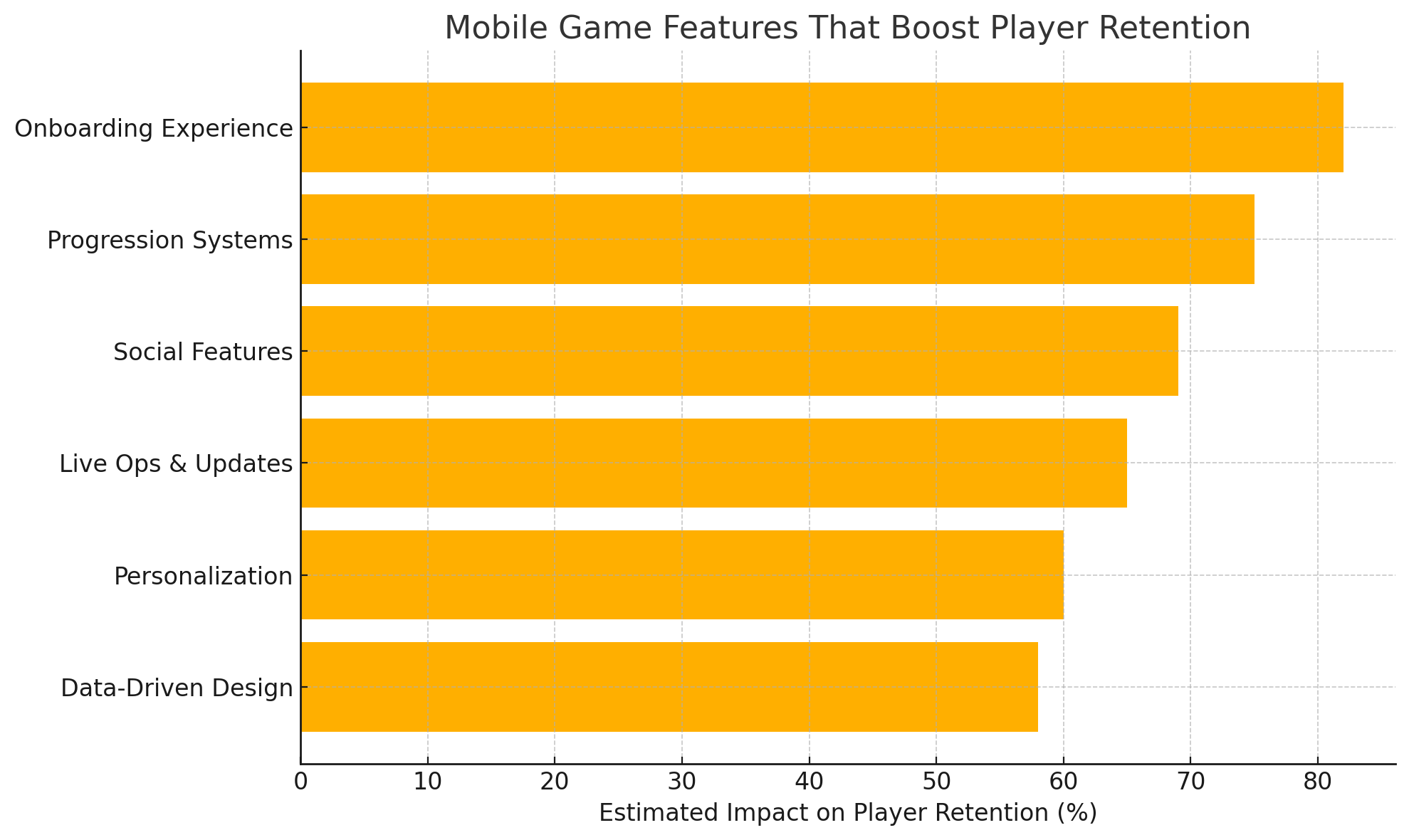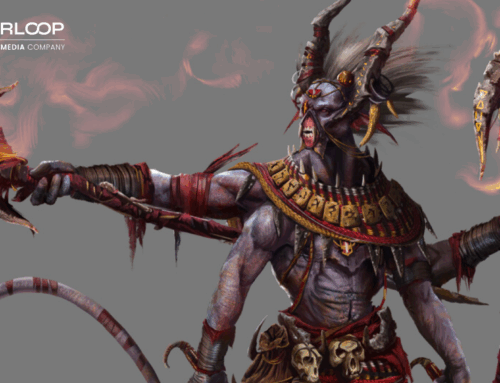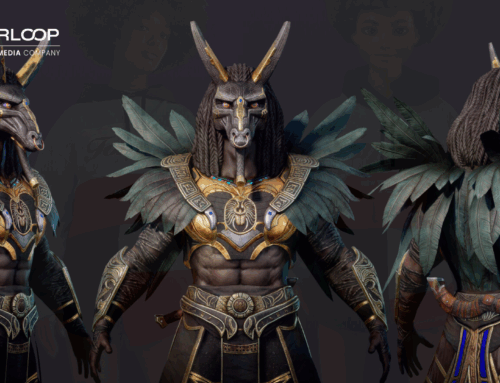How to create mobile game features that keep players engaged in 2025
What mobile game features keep players engaged in 2025? That’s the question every developer needs to answer to succeed in today’s crowded app stores. With thousands of titles released each month, standing out requires more than sharp graphics — it takes smart, personalized game design built around player retention. In this guide, we’ll explore the top-performing features in mobile games today, including AI-driven personalization, live events, social mechanics, and emerging 2025 trends that drive downloads, engagement, and long-term loyalty.
Why features matter more than ever in mobile game development
As mobile gaming revenue continues to outpace console and PC, competition is fierce. In 2025, players expect more: seamless UX, fast onboarding, meaningful progression, and social interactivity. The features you build aren’t just “nice-to-haves”—they’re make-or-break elements for your game’s success. That means the question is no longer should you invest in game features — it’s which ones will move the needle?
AI-driven personalization
AI is revolutionizing how mobile games engage players. From custom-tailored challenges to dynamic reward systems, personalized gameplay is now expected. Games that adapt in real-time — learning a player’s skill level and offering tailored progression — see higher retention and session time. Unity forecasts AI personalization as one of the most impactful trends for mobile game engagement in 2025.
Faster, smarter onboarding experiences
You have just a few minutes — or less — to hook a player. In 2025, top-ranking mobile games use lightweight tutorials, micro-rewards, and social sign-ins to make onboarding fast and frictionless. According to Mistplay, improving FTUE (first-time user experience) can increase D1 retention by up to 50%.
Social features and live multiplayer
From leaderboards to synchronous PvP and co-op events, social mechanics aren’t just retention tools — they’re vital to growth. In 2025, more mobile games will embed Discord-style chat, clan systems, and even UGC (user-generated content) into gameplay. Social features also open the door for virality through friend invites and challenges.
Live events and content drops
LiveOps are no longer optional. Players expect evolving content, seasonal updates, and time-limited events. These not only keep players returning but also offer key monetization windows. Leading studios schedule out LiveOps content up to a year in advance. Tools like Unity and Playfab now make it easier to trigger in-game changes without code updates.
Visualizing feature impact
Which features actually move the needle? Here’s a graph summarizing feature impact on player retention based on aggregated insights and industry trends:

Progression systems that reward smart play
Whether it’s a leveling tree, unlockable cosmetics, or achievement milestones — players crave growth. Smart progression systems combine short-term wins with long-term goals. The top games in 2025 don’t just reward time spent — they reward skill, consistency, and strategic choices.
Hybrid monetization models
2025 has seen a rise in hybrid monetization strategies that balance IAP (in-app purchases), ads, and subscriptions. Games like Royal Match and Clash Royale are blending soft currencies, battle passes, and ad rewards in a way that doesn’t alienate players. The key: offer value without pressure.
Cross-platform play and cloud sync
Players want flexibility — start on mobile, continue on tablet or PC. More developers are using Unity, Unreal, or proprietary engines to support seamless cross-play and progress sync. With 5G and edge computing becoming standard, performance concerns are shrinking.
Accessibility and inclusion
Accessibility is now an expectation, not an add-on. In 2025, mobile games are rolling out features like colorblind modes, audio cues, one-hand controls, and customizable HUDs. Beyond usability, there’s growing focus on narrative inclusion and character diversity.
Player feedback loops
Community-led feature development is powering engagement. Top studios run in-app surveys, Discord polls, and even Reddit AMAs to involve their audience in roadmap decisions. This creates advocacy and drives retention through shared ownership of the game’s evolution.
What mobile game players want in 2025
Based on trend reports from Tap Nation, Udonis, and Wayline, the 2025 player wants:
- Immersive experiences that feel tailored
- Competitive and cooperative social play
- Clear, fair monetization
- New content that evolves the world
- Real-time feedback and support
Final thoughts
In a landscape where players have endless options, the quality and strategy behind your mobile game features will make or break success. From AI-powered personalization to community-based content updates, staying ahead in 2025 means delivering value on every tap.
Work with a game development partner that gets it
If you’re aiming to create a standout mobile game with features built for 2025 and beyond, partner with a game development expert at Magic Media. Their team helps studios build high-performing games that engage players, grow communities, and scale sustainably.



